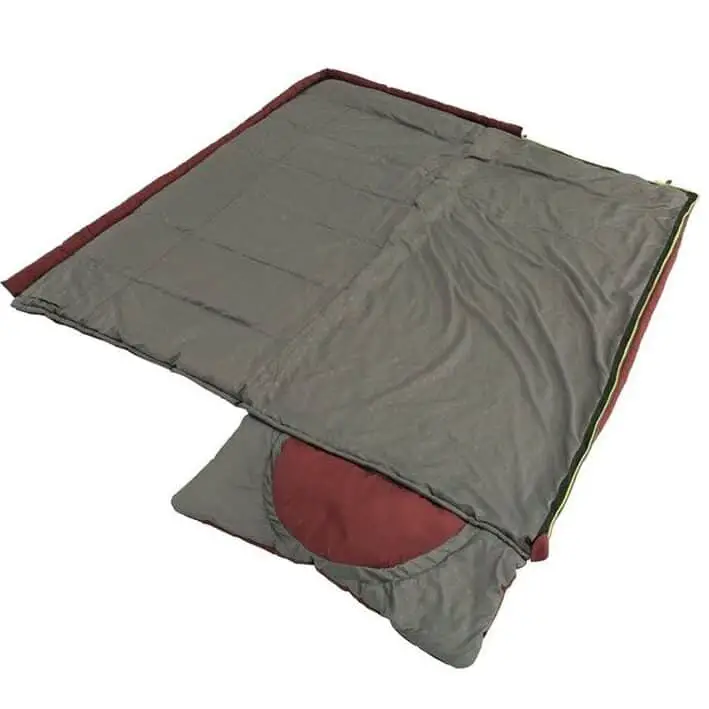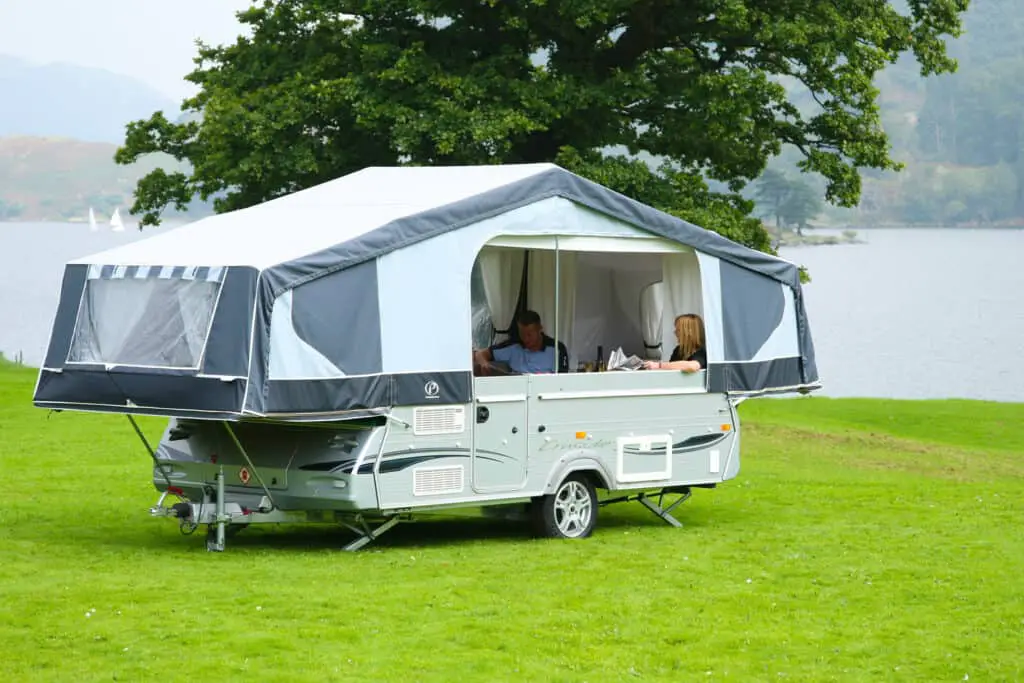Before purchasing my folding camper, I knew that I’d want to use it all year round – not just during the summer months. For that reason, I needed to make sure a folding camper could be reliably used all year. So before purchasing a folding camper, I did some research to find out if they are suitable for all year camping.
Is a folding camper suitable for all year camping? Yes, a folding camper is suitable for all year camping. With the right equipment and knowledge, you can enjoy trips with your folding camper no matter the weather.
So yes, folding campers are suitable for all year camping. However, it’s important to prepare your folding camper for out-of-season trips. In this blog post, I’m offering you my best tips for adapting your folding camper for travelling out-of-season. With my tips, you can ensure that your camping is enjoyable all year round, no matter how cold or rainy it is outside.
Tips For Camping In A Folding Camper Out-Of-Season
Many folding camper owners use their folding campers out-of-season. Here are some key tips for keeping your folding camper warm and in good condition when camping all year round.
Use Oil & Fan Heaters To Keep Warm

If you intend to camp during the winter, your folding camper will be cold without heaters. After all, you are still sleeping under a non-insulated canvas when using a folding camper!
As I detailed in one of my older blog posts, folding campers aren’t warm. The temperature inside a folding camper soon drops as the temperature outside does. However, oil and fan heaters keep your folding camper warm very effectively. Here’s how you can keep your folding camper warm by combining the two.
If it’s suddenly very cold in your folding camper, you can use a fan heater to quickly bring the temperature of your camper up to a suitable level. A fan heater quickly heats up a folding camper, so you’ll be warm and toasty in no time. However, it’s difficult to maintain this temperature with a fan heater, as you can’t leave them on overnight or unattended. That’s where oil-filled radiators come in.
While oil-filled radiators won’t quickly heat your folding camper, you can leave them on for a long time, and they will maintain the temperature of your camper. It’s safe to leave oil-filled radiators on overnight, so you’ll be warm all night long no matter how cold it is outside.
While it’s possible to just use one or the other type of heater, it’s worthwhile taking both. A small oil-filled radiator and a fan heater won’t take up too much room, but both do wonders for heating up and maintaining the internal temperature of your folding camper.
I personally use the Kampa Diddy Heater. It isn’t too expensive, it comes with a tip-over protection switch, and it also has two heat settings. It’s small, so you can easily store it in your camper. Considering its cheap price, it does an amazing job of heating up your folding camper very quickly. Click here to purchase or find out more about the Kampa Diddy Heater.
Insulate Under The Mattresses And Around The Beds

When I first used my folding camper during the winter, I was warm enough throughout the day and before heading to bed. However, as soon as I got to bed, I felt cold and uncomfortable. This meant many sleepless nights, as I’m sure you can imagine.
After my first trip, I researched insulating the mattress and around the beds in my folding camper. There are many ways that you can insulate the mattresses in your folding camper. Insulating your mattress could be as simple as sleeping on top of a duvet. Many suggest that using fleece mattress protectors makes a big difference. Sleeping on top of a duvet in a sleeping bag really does ensure that you’ll have a comfortable night’s sleep – even if you’re prone to easily getting cold!
After my initial experience, I used a high-quality sleeping bag with plenty of in-built insulation. This is typically more than enough to keep me warm, even during the cold winter when I’ve used my folding camper. This might be enough for you too. However, if you are prone to getting cold, heated mattress pads are another way to keep your bed warm.
The sleeping bag I use is the Outwell Contour Lux Sleeping Bag. My favourite feature of this particular sleeping bag is its Isofill insulation, which keeps the sleeping bag nice and warm. It also has a two-way zip which maximises airflow when it gets too warm. You can find this sleeping bag here on Go Outdoors.
Sometimes, you might have a problem with cold air blowing up under the canvas. This can ultimately result in a really cold night in your camper! I received this great tip a long time ago from another folding camper owner. If you experience issues with cold air coming under the canvas and into your folding camper, use plastic bags to fill in the gaps where the air is creeping in. You can easily fill gaps with plastic bags and easily remove the bags again when you’re packing up and heading home, making them the perfect solution for insulating your camper without any cost.
Pack Up Late Morning – Early Afternoon

There’s plenty of healthy debate concerning the best time to pack up your folding camper before travelling home. This debate is important because packing up a folding camper damp and then not airing it out later on can result in mildew and mould developing on its canvas. Not only is this unpleasant in appearance, but mould can actually damage your folding camper’s canvas!
So when holidaying out-of-season, when the weather likely isn’t the best, when is the best time to pack up your folding camper? Based on personal experience and the feedback of other folding camper owners, I would say the best time to pack up is late morning or early afternoon. Here’s why.
When you wake up in the morning, your folding camper is likely to have condensation in it and the air inside and out is damp. If you pack up straight away, this means the canvas of your folding camper will still have moisture on it. As there’s no air in your folding camper, mould will soon begin to develop if you don’t air the canvas out. Likewise, if you leave packing up till late afternoon or early evening, you’ll have the same problem with damp air again.
By packing up late morning or early afternoon, you’ve let the morning condensation and damp air clear. By packing up nice and early, you avoid having to pack up your folding camper as the air becomes damper again in the late afternoon.
Obviously, you can’t always avoid packing away your folding camper while it’s damp. Every folding camper, including me, has had to fold away their folding camper while the canvas is still damp – it’s unavoidable. If you do have to pack away your folding camper while it’s damp, air it out as soon as possible when you get home. You should air your folding camper within 24 – 48 hours if possible to avoid mildew and mould developing on the canvas.
If you are concerned that the folding camper canvas could be damp and you’re just not sure, simply open up your folding camper when you get home (there’s no need to erect it) and allow air to circulate through it for a few hours. This should clear up any leftover moisture and prevent mildew or mould staining and damaging the folding camper canvas.
Conclusion
Camping all year round in your folding camper is perfectly plausible, provided you take the tips detailed above and use them. You can enjoy camping in the summer and the winter, making the most of your folding camper.
I really believe that camping in the winter is better than camping in the summer in some ways. First and foremost, there’s less people camping at the same time. Secondly, who doesn’t love getting wrapped up in loads of layers of clothing and just chilling out? I know I do, and many other folding camper owners feel the same.
I hope you find the tips I’ve explained above useful! Hopefully you’ll have the confidence to go on your first winter or spring camping trip soon!


